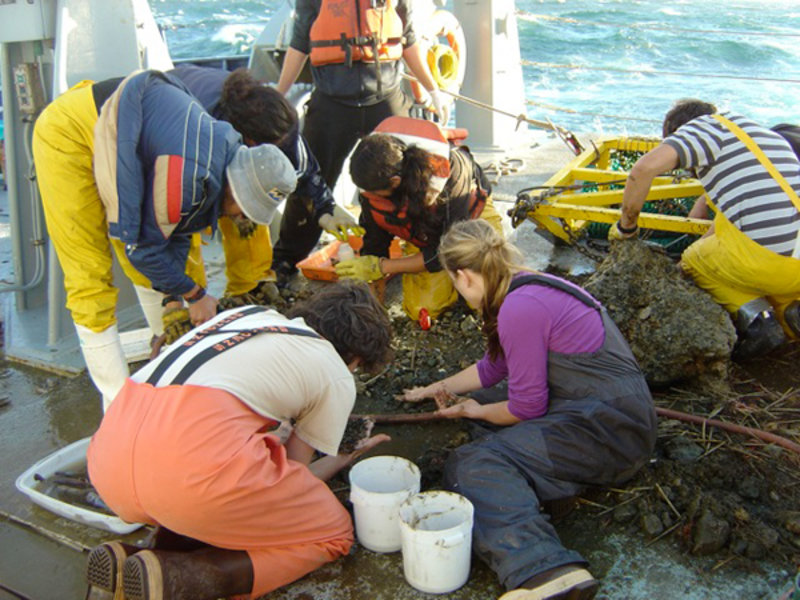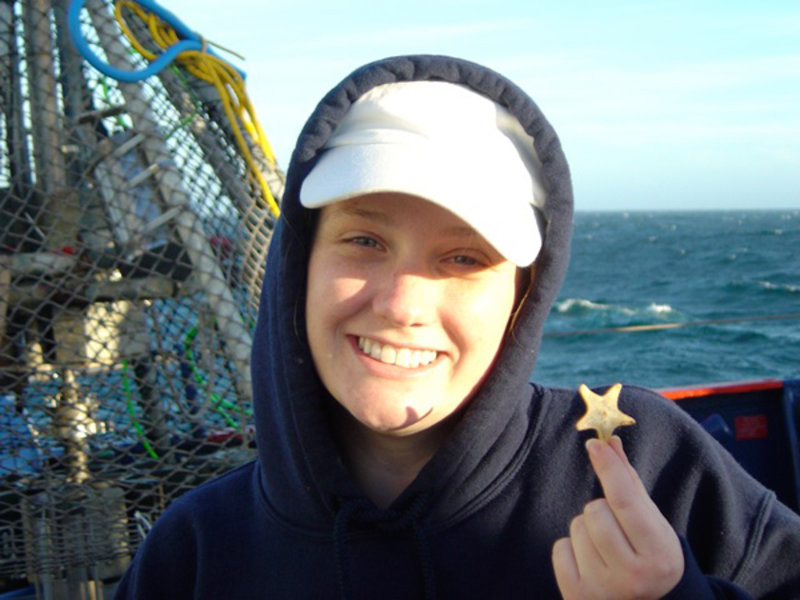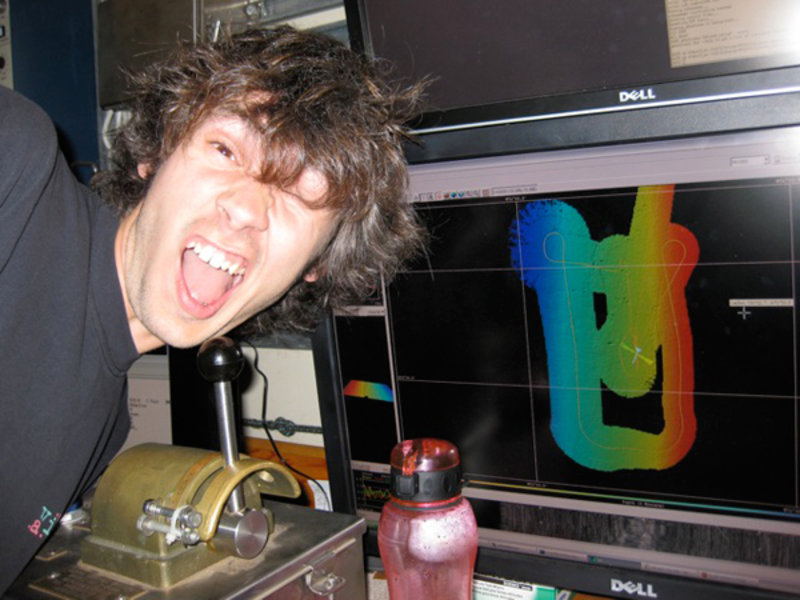
By Ashlee Henig, Scripps Institution of Oceanography
March 13, 2010
The last few days aboard the research vessel (R/V) Melville have (fortunately) yielded productive multicores and trawls. For the biologists and sediment chemists, this is what they have been waiting for: an overabundance of mud and animals. For myself (the geologist), the trawls have brought up innumerable things foreign to me. You'd think these unknown-to-me critters of the deep would be some of the strangest things I’ve ever seen. Shockingly, however, I’ve seen nothing stranger yet than the primitive nature triggered in these excited biologists. They remind me of vultures, swooping in to scavenge whatever they can get their excited little hands on.

Biologists/foragers cluster together, waist-deep in mud, to dig through the contents of a trawl. Image courtesy of INSPIRE: Chile Margin 2010. Download image (jpg, 139 KB).
As soon as the trawl dumps its contents (a seemingly inseparable jumble of rocks, mud, and sea life) onto the deck, the biologists are there foraging and gathering. They are covered in mud, sitting in mud, digging through mud; they are extracting worms, collecting crustaceans, gathering fish and squid and sea stars. It is like a crazed feeding frenzy, and I just can’t stop watching.
The frenzy continues, even when the contents of the trawl have been picked over until nothing is left. During the transit to our fourth and final study site, the Peru-Chile Trench, everyone is madly trying to classify their treasures, document and preserve them, and even occasionally name them (see the photo of me with my starfish, “Patrick”).

Ashlee Henig and her new friend “Patrick” pose together after the starfish was rescued from the scavenging biologists. Image courtesy of INSPIRE: Chile Margin 2010. Download image (jpg, 97 KB).

Ben Grupe imitates the crooked bear-shaped map created after a biologist designed our mapping survey. This is the main mapping equipment that will be used for earthquake exploration during the Scripps Institution of Oceanography’s Survey of the Earthquake and Rupture Offshore Chile (SIOSEARCH) cruise. Image courtesy of INSPIRE: Chile Margin 2010. Download image (jpg, 96 KB).
Now that we are heading to our deepest study site, Rosa Leon-Zayas will be conducting temperature- and light-sensitivity studies on piezophiles (deep-dwelling bacteria). We have no more trawls scheduled for this cruise, but the images of biologists tearing through mud and critters will not be something I forget soon.
As for me, I have some exciting plans that I want to mention before I end my final blog of the cruise. Many of you were curious about the underwater effects of the magnitude 8.8 earthquake that occurred off the coast of Chile on February 27, 2010, a few days after our INSPIRE adventure began. The National Science Foundation is sponsoring a weeklong rapid-response cruise immediately trailing the INSPIRE cruise, which will map deformation and mass movement on the seafloor that may have occurred as a result of the earthquake and its aftershocks. Some scientists from Scripps Institution of Oceanography, including myself, and a few Chilean scientists will be participating in this detailed mapping project and are looking forward to sharing our results.